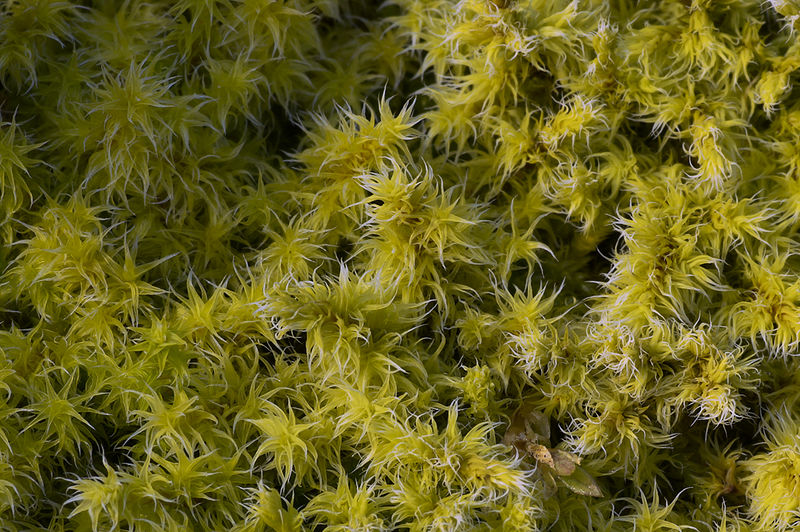Most of us are familiar with mosses, even though we tend to use it as a catch-call term for any of the green 'gunk' that grows in damp areas (which tends to include not only mosses, but also cyanobacteria and lichens). More botanically minded people will often combine mosses with liverworts and hornworts into a group known as the bryophytes.*

Colonisation of dry land was a major evolutionary challenge for plants (just as it was for animals). Water provides buoyancy and support for the tissues of a plant. Terrestrial plants must support their own tissues. Land plants must deal with water loss and the ever-present risk of desiccation. And finally, land plants have to deal with the fact that water and mineral nutrients are not even distributed in space; water and minerals are more abundant in the soil.
Vascular plants - a group that includes flowering plants, conifers and ferns - have evolved a series of strategies to deal with these challenges. Leaves are waterproofed by waxy cuticles. Water is transported from the soil up to the top of the plant - even the tallest tree - through the xylem, which also doubles as a support system.
As traditionally defined, bryophytes were non-vascular plants - plants that lack xylem and phloem. Without vascular tissue, they are unable to transport water and minerals very far from the soil surface. This, coupled with their lack of tissues to prevent water loss, leaves them with a relatively limited set of options - they can only grow in moist environments, and they can never get very far from the group.
Most people would see this as a primitive condition - bryophytes have overcome some of the challenges their aquatic ancestors faced when they colonised the land, but only in a limited fashion. This view, however, is a mistake. Modern species - even "living fossils", which appear to have experienced little change in millions of years - are fully modern. They are not primitive species that have somehow been sheltered from the realities of evolution. They exist in and interact with communities of modern species. Nonetheless, it's normal to think of "basal" taxa as having remained more similar to ancestral species, while more derived taxa have become more dissimilar. But these assumptions can be misleading.
Bryophytes are unable able to conserve water; in seasonal environments it's normal to see shrivelled, desiccated mosses during dry periods. Knowing that land plants originated from aquatic ancestors, it may seem reasonable to assume that this is a primitive condition, a failure, on the part of bryophytes to fully adapt to the challenges of life on land. It would be a mistake to do so. We shouldn't look at the inability to bryophytes to tolerate desiccation as an inferior solution to the problem of life on land. Instead, it should be seen as an alternative solution to the problem. Vascular plants have worked around the problem of desiccation by maximising water supply and minimising water loss. Bryophytes, on the other hand, have evolved the ability to tolerate desiccation.
There's a strong temptation to think of this as a "primitive" or "ancestral" condition, but in reality it provides options unavailable to vascular plants, like the ability to grow on rock surfaces or tree bark, places where there just isn't enough water available to supply the needs of vascular plants between wet periods.
*The traditional concept of the Bryophyta does not hold up under modern phylogenetic classification systems. Liverworts are believed to be a sister group to all other land plants. Mosses diverged next, with the final split between the hornworts and vascular plants coming later still.





Comments